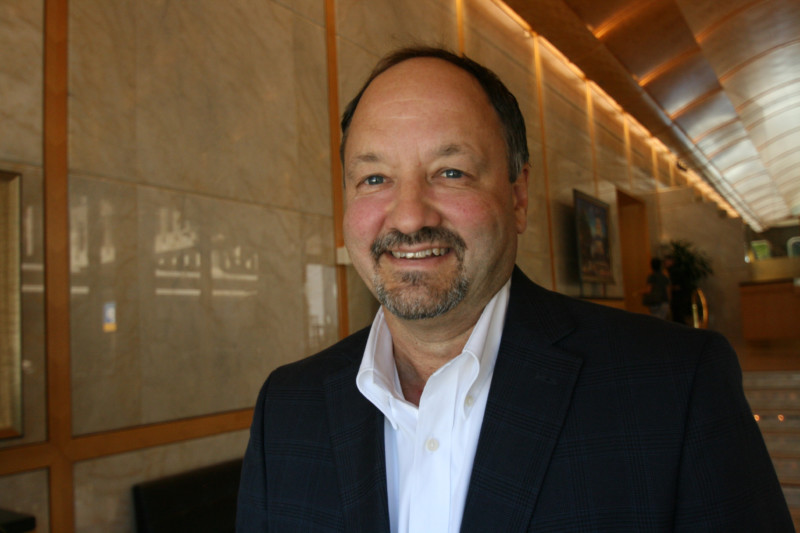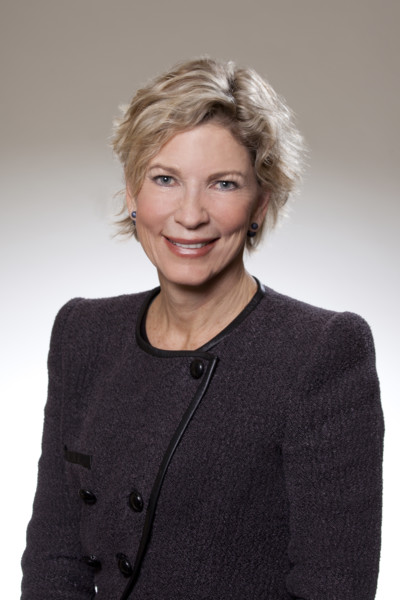Sign up for the daily CJR newsletter.
An axiom of the nonprofit news world is that there’s only so much philanthropy to go around—only so many foundations and only so many rich people willing to invest large sums in journalism.
But what if that isn’t true? At a time when American journalism has lost tens of thousands of jobs, especially at the state and local levels, could this accepted wisdom be out of date? Philanthropy already has ramped up in the last decade to create dozens of state, local, and national news nonprofits. Might this only be a start? Might philanthropy become a more robust and durable subsidy that is able to create and broadly sustain many hundreds of news organizations across the country?
The California nonprofit CalMatters is out to make that case—that wealthy individuals in particular are willing to help fill the growing gaps in news coverage.
In late 2014, alarmed by the rapid disappearance of Sacramento’s statehouse press corps, Simone Coxe co-founded CalMatters, pledging to raise $5 million for a news nonprofit that would re-focus public attention on critical California issues. Having met their three-year goal, Coxe and her team of money-raisers are doubling the ante. CalMatters now is aiming at a $10 million budget over the next three years, which would instantly make it one of the nation’s largest digital nonprofits focused on state or local news.
RELATED: ProPublica hopes to apply its Pulitzer-winning formula to local news
While a few foundations have provided support, 90 percent of the money has come from individuals, many giving more than $10,000 a year. And they are projected to make up a substantial majority of the new, $10 million campaign. CalMatters’ first-round donors “bought the idea, they like the execution, and I don’t have any indication they’re going to stop,” says Coxe, CalMatters’ board chair, in an interview (Read excerpts of our conversation).
CalMatters’ quick fundraising success has moved it into the ranks of more established state and local news nonprofits like MinnPost and Voice of San Diego, and its annual budget, now $2.2 million, soon may be surpassed only by Texas Tribune.All of these top-tier news organizations share an important trait: They’ve been turbo-charged by major individual contributions, both at launch and in the years following.
There are more than 100 digital news nonprofits in the United States, and the vast majority are trying to diversify their revenue streams to become less reliant on these major gifts, as well as on foundations grants. But some leaders in this industry are simultaneously coming to believe that philanthropy, particularly individual giving, has room to grow. Perhaps a lot of room.
“I’m getting a lot more calls from people who are philanthropic advisers,” says Sue Cross, executive director and CEO of the Institute for Nonprofit News, the industry’s primary trade group. She spoke last year to a philanthropy conference, and was struck by the fact that nonprofit news “is still really new to most of them. My sense is that it’s still really early. The growth potential is there.”
There are more than 100 digital news nonprofits in the United States, and the vast majority are trying to diversify their revenue streams to become less reliant on these major gifts.
Philanthropy in support of news reporting is nothing new. For decades it has been a driving force behind public radio and public television. At, NPR, 14 percent of its $213 million budget in 2016 came from grants and individual contributions.
This is daunting competition for the new breed of digital startups. Andrew Wallmeyer, publisher of MinnPost, notes that Minnesota Public Radio has a membership of 130,000 and Minnesota Public Television has 95,000 members, against MinnPost’s current roster of about 3,000 members.
The Institute for Nonprofit News lists 127 members, ranging from state-based investigative reporting sites, to general news shops covering cities and/or states, to subject-matter organizations targeting topics like education or health.
Recently, philanthropy has also moved into subsidy streams of for-profit enterprises. The Guardian and The New York Times, for example, have established philanthropic arms that aim to support their reporting or innovation efforts.
RELATED: Project aims to deploy 1,000 new local reporters
Yet many of the nonprofit startups have struggled over the last decade. Some have failed, and most have had trouble finding a business model that met their growth aspirations and reduced their dependence on foundation grants, which generally make up the largest chunk of their income. (A Knight Foundation study of 20 news nonprofits in 2015 found that 58 percent of their revenue came from foundations versus 19 percent from individual donations and membership.)
That difficulty, then, is what’s led to the enthusiastic response to the rise of the new patrons.
CalMatters joined the nonprofit ranks in late 2014, its founders convinced that California was losing the journalistic firepower necessary to inform citizens about important state issues. David Lesher, CalMatters’ editor and CEO, said The Los Angeles Times, for example, has lost roughly two-thirds of its Sacramento-based staff in the last decade.
The dramatic hollowing out of statewide coverage has “profoundly changed the policy-making process,” says Lesher. “The whole process of making a case to the public has broken down.”
As is true for many nonprofits, CalMatters’ editorial staff of 16, with two more about to be hired, works with newspaper and broadcast outlets across the state to distribute its content. The coverage priorities are education, health, the environment, the economy, and the California legislature.
Lesher said one of CalMatters’ early successes was a nine-month partnership with The Los Angeles Times and Capital Public Radio for an award-winning project on California pension debt. More recently it debuted a card-deck project on the high costs of California housing, employing reader engagement techniques from the Hearken platform and Solutions Journalism Network. An even bigger reporting project is unfolding: a two-year initiative exploring “What Happened to the California Dream?” with the state’s four largest public radio stations and Digital First newspapers.
With its expanding budget, CalMatters is reinforcing its business side. Digital news veteran Marcia Parker signed on as publisher in early 2017, and the site recently hired a development director. A membership program will be rolled out this year, along with other initiatives aimed at diversifying its revenue.
But Lesher is unapologetic about the enterprise’s reliance on charitable giving. “We’re still at the very beginning of a pretty big transition,” he says of the convulsions hitting the news business. “Philanthropy will at least be a bridge.”
One reason nonprofit news leaders are optimistic about the future is that they have barely begun to learn how to solicit big money. The journalists who often run these organizations are comfortable filling out requests for foundation grants. But many don’t know how to ask people of wealth for money.
News nonprofits have a powerful case to make to their communities, says Matt DeRienzo, executive director of the Local Independent Online News Publishers, a coalition of for-profit as well as nonprofit publishers. “But making the ask is another thing,” he says. “They need training.”
In addition to worrying about how their startups’ bills can get paid, news nonprofits must reckon with multiple critiques about their philanthropy-dependent business model. Coxe is well aware of the criticisms, and had an early experience with one of the most prominent ones—that nonprofit journalism is too beholden to the people and institutions that fund it.
“My original idea was I could find five couples that cared enough about media and California to raise $5 million for the first three years,” she says. “I’d put $1 million in and find four other couples that would each put in $1 million, and we’d be done.”
But Coxe says Lesher objected, arguing a much broader funding base was necessary. So she altered her plan—although still contributing $1 million herself—and recruited a broader base of supporters. And in that process CalMatters also addressed another common criticism of nonprofits: that they often have a funding base tilted toward progressive donors.
Coxe is a Democrat, but her co-founder, Chris Boskin, is a Republican who was appointed by President George W. Bush to serve on the Corporation for Public Broadcasting board. Boskin was able to recruit a number of high-profile Republicans to the CalMatters cause. Two GOP former secretaries of state, Condoleezza Rice and George Shultz, as well as former Los Angeles Mayor Richard Riordan, also a Republican, are listed as giving between $10,000 and $50,000.
Coxe and Lesher are adamant that none of their funders—the site lists 60 as having given $10,000 or more—has any say in CalMatters’ journalistic decisions. On two other points, though, Coxe said CalMatters has work to do. Both the board and CalMatters staff are too white, she says. “Seven of our nine reporters are white. We have to reflect the California population.”
I asked her about a recent paper by New York University Professor Rodney Benson, who argued that news nonprofits are unwisely catering to elite audiences, blowing a chance to serve underserved audiences.
Right now, she says, CalMatters is focused on “elite audiences, the influencers. Because if you are actually trying to get people to pay attention and create change in Sacramento, you first have to go to people who already care, who tend to be elite influencers.”
That will change as the news organization more richly develops its specialty topics, says Coxe. “If you care about education, we should be going after every PTA member in the state, and that’s a diverse audience. We should go after people who care about immigration, and that’s a diverse audience.”
For the moment, though, Coxe is concentrating on raising that next $10 million, only $2 million of which has been secured (including her second $1 million gift). And she acknowledged the challenge that has tripped up so many nonprofits.
“Fundraising is relentless,” she says. “I’ve never been on the line the way I am now.
“But also, there is huge joy and satisfaction in sitting down with somebody and explaining what we’re doing and having them respond with a big check… People of means do care; the challenge is that everybody is after them.”
Editor’s Note: This article launches a series of stories that will run in CJR about the rise of local and state nonprofit news sites and their pursuit of individual philanthropy. It is funded by the University of Southern California’s Center on Communication Leadership and Policy, located at the Annenberg School for Communication and Journalism. Its director, Geoffrey Cowan, has been focusing on nonprofit news since 2008.
RELATED: A nonprofit newsroom rescued its local newspaper. Now it wants to expand.
Has America ever needed a media defender more than now? Help us by joining CJR today.









